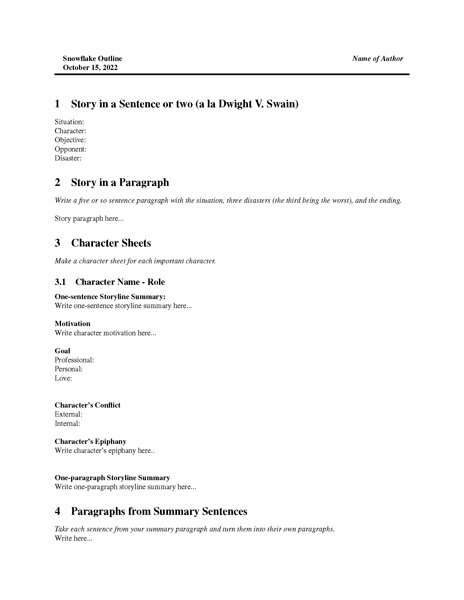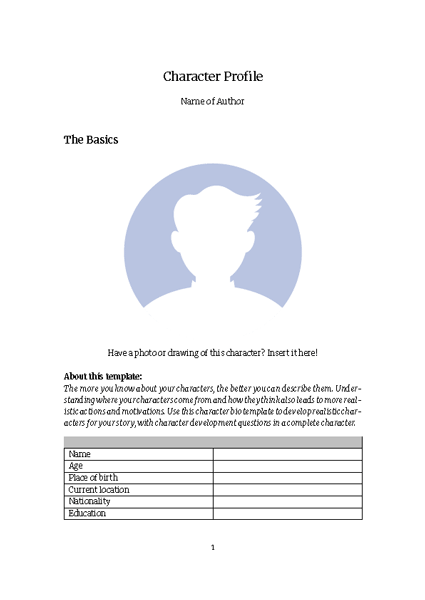Creating The Protagonist And Antagonist - Definitions And Differences
Your protagonist's and antagonist's individual character-building, their relationship and their interaction throughout your story can make or break your story-writing. Read on to find out more about their key differences and how you can build their characters well!

Across multiple forms of story-telling and creative writing, the protagonist and the antagonist play critical roles in driving a plot forward. What exactly is their relationship and what encompasses their purposes and personas in a story?
These two characters are seen as opposing forces serve as the driving forces behind the plot; with the protagonist representing the hero or central figure of the story and the antagonist acting as the main adversary. Together, they create a dynamic and often complex relationship that draws readers and audiences into the narrative, leaving them invested in the outcome of the conflict between the two.
Read on to find out more about what roles they both play in a story!

The Protagonist vs The Antagonist
While both the protagonist and antagonist have central roles in any story, there are marked differences in the purposes they serve. In a novel or story, the protagonist is the main character around whom the narrative typically revolves. They are usually the character that the reader or audience sympathizes or resonates with the most and whose journey or struggle is the central focus of the entire story.
On the other hand, the antagonist is the character or force that opposes the protagonist. They tend to create conflict or obstacles that the protagonist must overcome in order to achieve their goals in the story. The antagonist can take also many forms, from a rival character with opposing goals or motivations to a more abstract force such as nature or society.
What Is A Protagonist?
The main roles of the protagonist include driving the plot forward, overcoming obstacles and conflicts, and ultimately achieving their goals in the story. The protagonist's journey often involves some sort of personal growth or transformation, as they learn important lessons or face significant challenges that shape their character.
Photo by Matthew Ball / Unsplash
In addition to being the central character, the protagonist can also be used to convey the story's main themes or messaging. By following the protagonist's journey, the reader or audience can gain insights into the human experience, explore complex emotions and ideas, and ultimately come away with a deeper understanding of the world around them.
Key Points To Consider About Your Protagonist
The protagonist is undoubtedly the main character and driving force in your story. However, even though the protagonist often referred to as the “hero,” this character may not necessarily be good or bad.
But the story will be told from the protagonist’s point of view. This makes it important that this character is relatable to the reader. The protagonist’s choices, even the bad ones, should make sense to the reader. The reader should ideally understand where the protagonist is coming from and root for him. Remember, no one relates to or roots for someone who is carved perfect. Readers usually have a soft spot for characters that they see themselves in, or see human flaws in.
Depending on the genre of your story, you may also have more than one protagonist at a time. It’s not uncommon for romance, sci-fi, or historical novels to follow two protagonists.
While trying to build your protagonist, you can start by writing a biography for your character with as much information as you can gather. Flesh out their backstory. This isn’t necessarily information that will be used in the manuscript, but the more you know the better and more rounded your character will be. Figure out what their relationship is to the antagonist at the same time as well.
What Is An Antagonist?
The role of the antagonist is to provide the central conflict of the story, which helps to drive the plot forward and keep the audience engaged. By presenting obstacles and challenges for the protagonist to overcome, the antagonist creates tension and drama that can make the story more compelling and continuously engaging.
In addition to creating conflict, the antagonist can also serve as a foil to the protagonist, highlighting their strengths and weaknesses and providing a contrasting perspective on the themes and ideas explored in the story. In some cases, the antagonist may even be sympathetic or relatable, making the conflict more complex and challenging the reader's or audience's assumptions about good and evil.

Ultimately, the role of the antagonist is to create a dynamic story that challenges the protagonist, and the readers, and brings up important themes and ideas at the same time.
Key Points To Consider About Your Antagonist
If the protagonist is deemed the “good” guy in the story, it would seem easy to label the antagonist as the “bad” guy. But, protagonists aren’t necessarily wholly good. They’re complicated and flawed, and that’s what makes them relatable.
For much the same reason, an antagonist shouldn’t be 100% evil. Where’s the fun in that? An antagonist is not evil incarnate. What defines an antagonist is the role that he plays in the protagonist’s life. If the character moves against, and not with, the protagonist, he is the antagonist. The antagonist may also represent one person or a group of people, like an evil organization.
If you're looking for a tool to build your antagonist characters for your story, and to place them and your protagonist in a convincing storyline, the Snowflake Outline Method Templates by JotterPad can be the brainstorming skeleton that you need.

In this template, you have guidelines that help you clearly state the goals and motivations of your characters, their internal and external conflict, and many other story building blocks that you need to create well-developed characters and a robust story outline.
Key Differences Between The Protagonist And The Antagonist
While the protagonist and antagonist are two important characters in a story who play complementary roles in driving the plot forward and creating engaging and dynamic narratives, they're key differences can be summarized into 5 main points; their central role, their main goals, their characterization, the actions they take, and the manner in which the characters develop and change. These differences are briefly explained as follows:
1. Their central role in the story
The protagonist is the main character who drives the story forward. They are typically the hero or heroine of the story, and their journey is usually the primary focus of the plot. The protagonist is usually someone with whom readers can empathize, and they often have clear goals and motivations that drive their actions throughout the story. The protagonist is usually the character that the reader is meant to root for and want to succeed.
Photo by Patrick Tomasso / Unsplash
On the other hand, the antagonist is the character who opposes the protagonist and creates conflict in the story. They are often portrayed as the villain or antagonist, and their actions are usually designed to thwart the protagonist's goals. The antagonist's motivations may be different from the protagonist's, and they may have different beliefs, desires, or values. The antagonist is usually the character that the reader is meant to dislike and want to see defeated.
2. The character's goals in the story
The protagonist's goals are typically driven by their desires and needs, and they are often the driving force of the story. These goals may be specific, such as saving a loved one or achieving a personal dream, or they may be more abstract, such as finding purpose or redemption. Regardless of the specifics, the protagonist's goals are what give them a sense of purpose and drive them forward through the story.
Photo by Iulia Mihailov / Unsplash
In contrast, the antagonist's goals are usually focused on opposing the protagonist and achieving their own objectives. The antagonist's goals are often more self-serving and may involve power, wealth, or revenge. The antagonist may use any means necessary to achieve their goals, including manipulation, deceit, or violence. The antagonist's goals are often what create obstacles for the protagonist and provide the primary source of tension and conflict in the story.
3. Their individual characterization
The key difference between the protagonist and antagonist's characterization is that the protagonist's characterization is often designed to make them relatable and likable to the reader, while the antagonist's characterization is often designed to make them unlikable or even despicable. However, both characters should be well-developed and have a sense of depth and nuance that makes them interesting and compelling to read.
The process of character development, no matter who that character is in your story, is crucial in ensuring that you have well-rounded and robust character profiles and personalities in your story. All-rounded character profiles allow writers to delve into the psyche of their characters and tease their personalities out throughout the story. JotterPad's Character Profile template allows you explore multiple aspects of characterization and can guide you in developing realistic characters for your story, with character development questions in a complete character.
With this template, you can start of by stating your character's name, place of birth, educational background, and occupation amongst others to build their background information first. After this, you can move on to building their physical appearance, by specifying their height, skin tone, hair color, any prominent features, gait and other characteristics.

This template also delves into their communication type and speech mannerisms, traits that you can use to further develop their individual characteristics. Use this section of the template to decide the tone of their voice, their favorite phrases to use, posture, and if they have an accent.
Add extra layers to your protagonist or antagonist by discussing their family members, their relationships, the types of friends they have, and by deciding what their ambitions, biggest fears, habits, and quirky personality traits are.
After going through these details in the template, you will be able to arrive at their story goal and story motivation with a lot more clarity at the end of the template.
4. The actions they undertake throughout the story
The actions of the protagonist are usually motivated by their goals and desires, and they are often focused on achieving a positive outcome for themselves or others. The protagonist's actions are typically portrayed in a positive light, and they are meant to make the reader root for the protagonist and want to see them succeed. The protagonist's actions may include acts of heroism, sacrifice, or self-discovery, among others.
Photo by Javier García / Unsplash
In contrast, the actions of the antagonist are usually motivated by their goals and desires as well, but they are often focused on achieving a negative outcome for the protagonist or others. The antagonist's actions are typically portrayed in a negative light, and they are meant to make the reader root against the antagonist and want to see them defeated. The antagonist's actions may include acts of villainy, deception, or violence, among others.
5. Their character development
The protagonist's character development refers to the changes, growth, and evolution that the character undergoes over the course of the story. The protagonist's character development is usually driven by the challenges, obstacles, and conflicts they face throughout the narrative. The character may learn new skills, overcome personal flaws, or experience a change in their worldview or perspective. The protagonist's character development should be consistent with their goals and desires, and it should make them a more complex and interesting character.
In contrast, the antagonist's character development refers to the changes, growth, and evolution that the character undergoes over the course of the story. The antagonist's character development is usually driven by their interactions with the protagonist, their own personal struggles, or the consequences of their actions. The character may experience a change in their motivations, a shift in their priorities, or a realization about the consequences of their behavior. The antagonist's character development should be consistent with their goals and desires, and it should make them a more complex and nuanced character.
As with any character in a story, protagonists and antagonists are both are multi-layered and complex in nature. Creating well-developed protagonists and antagonists is crucial to crafting a compelling story. By giving your main characters depth and complexity, you can make them relatable and engaging to readers. A strong protagonist should have clear goals, motivations, and flaws that drive their actions throughout the story, while a compelling antagonist should challenge the protagonist and provide conflict that propels the plot forward. This makes the stage of writing during which you develop their characters extremely crucial. Using templates like JotterPad's Snowflake Outline template and the Character Profile template will make sure that you don't miss any crucial character-building elements.
Together with individual character-building, their relationship and their interaction throughout a story are pivotal in many forms of story-telling, and have the potential to make or break your story.





